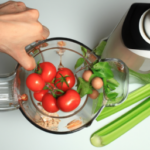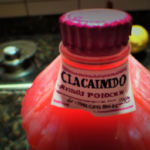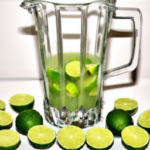Juice Tips and Tricks
How To Make Clam Juice

I love trying out new recipes and adding different flavors to my cooking. Lately, I’ve been intrigued by the versatility of clam juice. This ingredient can enhance the taste of both dishes and drinks, giving them a unique umami flavor.
Making clam juice from scratch might seem daunting, but it’s actually quite simple. All you need are fresh clams, a steamer, and some basic kitchen tools.
In this article, I’ll walk you through the steps of making clam juice, from sourcing fresh clams to adjusting the flavor to your liking.
So, let’s get started!
Key Takeaways
- Sourcing fresh clams from a reliable seafood market is crucial for making clam juice.
- Steaming the clams until their shells open and the meat is cooked through is necessary before collecting the clam juice.
- Adjusting the flavor of the clam juice with spices like celery salt, black pepper, and garlic powder can enhance the taste.
- Using clam juice in cocktails and cooking adds a unique flavor and provides health benefits while keeping it low in fat.
Sourcing Fresh Clams
You gotta head to your local seafood market to get your hands on some fresh clams for this clam juice recipe. Finding a reliable supplier is key to getting the best quality clams for your juice.
Look for a market that has a good reputation for selling fresh seafood. Don’t hesitate to ask the staff where the clams came from and how fresh they are. They should be able to tell you when the clams arrived and how they were stored.
When checking the quality of the clams, make sure that they are tightly closed. If the clam is open, tap it gently with your finger. If it doesn’t close, it’s no good. Also, check the shells for any cracks or chips.
Once you’ve found your clams, it’s time to move on to cleaning and preparing them for the juice.
Cleaning and Preparing the Clams
First, start by scrubbing the clams under running water to remove any debris or sand. It’s important to remove any sand or grit from the clams, as it can ruin the flavor of the juice. To ensure that the clams are clean, use a stiff-bristled brush or sponge to scrub the shells thoroughly. Pay special attention to the hinge area, as this is where sand and debris tend to accumulate.
Once the clams are clean, it’s time to shuck them. Shucking can be tricky, but with a little practice, it becomes easier. Hold the clam with the hinge facing you and insert the tip of a clam knife into the small gap between the two shells. Wiggle the knife back and forth to loosen the muscles that hold the clam closed, then twist the knife to pop the shell open.
Once the shell is open, use the knife to cut the muscle that attaches the clam to the shell. Repeat this process with all of the clams, discarding any that don’t open.
With the clams cleaned and shucked, we’re ready to move on to steaming them to create our delicious clam juice.
Steaming the Clams
Now it’s time to coax the savory essence from the ocean’s bounty by gently steaming the clams until they surrender their briny nectar.
To start, it’s important to select fresh, live clams. Look for clams that are tightly closed or that close when tapped. Avoid any that are already opened or have broken shells. Once you have your clams, rinse them thoroughly in cold water to remove any grit and sand.
Next, prepare the steaming apparatus by adding a couple of inches of water to a large pot and bringing it to a boil. Place the clams in the pot, cover with a tight-fitting lid, and reduce the heat to medium. Steam the clams for 5-10 minutes, until their shells have opened and the meat is cooked through.
Remove the clams from the pot and discard any that have not opened. Now, we can move on to the next step of collecting the clam juice.
Collecting the Clam Juice
As you watch the steam rise from the pot, the tantalizing aroma of the briny ocean fills your senses, signaling that it’s time to collect the precious liquid that will infuse your dish with flavor. Collecting the clam juice is just as important as steaming the clams, and it’s crucial to do it properly to ensure a delicious final product. There are several straining techniques to choose from, each with its own unique flavor profile.
One popular method is to use a cheesecloth or fine-mesh sieve to strain the clam juice. This results in a clear, smooth liquid that’s perfect for soups and stews. Another option is to use a colander or strainer with larger holes to capture some of the clam meat and add a more robust flavor to the juice. Whatever method you choose, be sure to discard any sand or sediment that may have accumulated at the bottom of the pot. Now that you have collected the clam juice, it’s time to adjust the flavor to your liking.
Adjusting the Flavor
To truly bring out the flavors of your dish, you’ll want to add a few key ingredients to your collected liquid. Start by adding some spices to the juice. I recommend using a combination of celery salt, black pepper, and garlic powder. You can also experiment with other spices, such as cumin or paprika, to give your clam juice a unique flavor.
When adjusting the flavor of your clam juice, it’s important to pay attention to the ratios of the ingredients. Start with a small amount of each spice and taste as you go. You can always add more, but it’s difficult to remove spices once they’ve been added.
Once you’ve found the perfect combination of spices, store your clam juice in an airtight container in the refrigerator for up to a week.
Storing Your Clam Juice
Don’t let your hard work go to waste by forgetting to store your deliciously seasoned clam juice in an airtight container in the refrigerator. Clam juice must be stored properly to maintain its freshness and flavor.
You can store it in a glass jar or a plastic container with a tight-fitting lid. The clam juice can be refrigerated for up to three days. However, if you want to extend its shelf life, you can freeze it for up to six months.
Freezing options are available if you wish to store your clam juice for a longer period. You can store it in an airtight container or a freezer bag. Before freezing, make sure to remove excess air from the bag or container to prevent freezer burn.
When ready to use, thaw it in the refrigerator or place the container in a bowl of warm water until it reaches room temperature. Now that you know how to store your clam juice, let’s move on to using it in cocktails.
Using Clam Juice in Cocktails
Get ready to add a new twist to your cocktail game by infusing your drinks with the unique flavor of briny ocean goodness. Using clam juice in cocktails might sound strange, but it adds a deliciously savory taste to your drinks.
Mixology techniques such as rimming your glass with Old Bay seasoning or using a smoked salt rim can enhance the flavor even more.
When it comes to flavor combinations, clam juice pairs well with tomato juice for a classic Bloody Mary or with citrus for a refreshing and tangy cocktail. Try mixing clam juice with grapefruit juice, lime juice, and tequila for a delicious twist on a Paloma.
The possibilities are endless, and experimenting with different ingredients can lead to some surprisingly delicious drinks.
Now that you have some ideas for using clam juice in cocktails, let’s talk about using it in cooking.
Using Clam Juice in Cooking
Cooking with clam juice is like adding a splash of ocean flavor to your dish, giving it a subtle but distinct taste that elevates the overall experience. Not only does it add a unique flavor, but it also has some health benefits.
Clam juice is low in fat, high in protein, and a good source of vitamins and minerals. Here are three ways to incorporate clam juice in your cooking:
-
Use clam juice as a broth base: Clam juice can be used as a base for soups and stews to give your dish a rich, savory flavor. Use it as a substitute for chicken or vegetable broth for a seafood twist.
-
Add clam juice to sauces: Add a splash of clam juice to your pasta sauce or stir-fry sauce for a briny, salty flavor that complements the other ingredients. It also helps to add a little extra liquid to thin out thick sauces.
-
Use clam juice in seafood dishes: Clam juice pairs well with other seafood such as shrimp, scallops, and fish. Use it to poach seafood or as a marinade to infuse the flavors. It also works well as a steaming liquid for clams and mussels.
Incorporating clam juice in your cooking not only adds a unique flavor but also provides some health benefits. It’s a great way to add some extra protein and nutrients to your dishes while keeping it low in fat. Give it a try and see how it elevates your cooking techniques to the next level.
Frequently Asked Questions
Can you use canned clams instead of fresh ones for making clam juice?
Yes, canned clams can be used instead of fresh ones for making clam juice. However, the flavor comparison may not be as good as with fresh clams.
What is the nutritional value of clam juice?
As a health-conscious individual, I appreciate the numerous health benefits of clam juice. It’s low in calories, high in protein, and contains essential vitamins and minerals. Culinary uses of clam juice include adding depth of flavor to seafood dishes and cocktails. Try incorporating it in your recipes for a nutrient boost.
Can you freeze clam juice for later use?
Yes, you can freeze clam juice for later use. To do this, simply pour the leftover clam juice into a freezer-safe container and place it in the freezer. When ready to use, thaw it and try using it in recipes like chowders or seafood stews.
How long can you keep homemade clam juice in the refrigerator before it goes bad?
I once kept homemade clam juice in the fridge for a week, and it went bad. To avoid this, store it in an airtight container and consume within three days. Keep it in the coldest part of your fridge.
Is it possible to make clam juice without a steamer?
Yes, alternative methods to using a steamer include boiling shucked clams in water or using canned clams. Flavor variations can be achieved with added spices or by using different types of clams.
Conclusion
Well folks, that’s how you make clam juice! It’s a labor-intensive process, but completely worth it for the deliciously briny flavor that you’ll get.
As a lover of seafood, I can tell you that this juice is the perfect addition to any dish that needs a little extra oomph. It’s like a flavor bomb that will take your cooking to the next level.
One thing I love about making clam juice is the satisfaction of knowing that I made it myself. It’s a bit like catching a fish and cooking it on the spot – there’s a sense of pride that comes with knowing exactly where your food comes from.
Plus, the freshness of the clams really shines through in the final product. So, give it a try and let me know what you think!
Cindy thoroughly researches juicing trends, techniques, and recipes to provide readers with practical advice and inspiration. Her writing style is accessible, engaging, and designed to make complex concepts easy to understand. Cindy’s dedication to promoting the advantages of juicing shines through her work, empowering readers to make positive changes in their lives through the simple act of juicing.
Juice Tips and Tricks
How to Make Aloe Vera Juice Taste Better

Tired of the strong flavor of aloe vera juice? No problem, we’ve got the answer for you.
In this article, we’ll share some tips and tricks to make your aloe vera juice taste better. We have tried and tested various methods to enhance the flavor without compromising the health benefits.
From choosing the right juice to adding natural sweeteners and infusing with fruits and herbs, we’ve got all the information you need to transform your aloe vera juice into a delightful and refreshing beverage.
Let’s dive in!
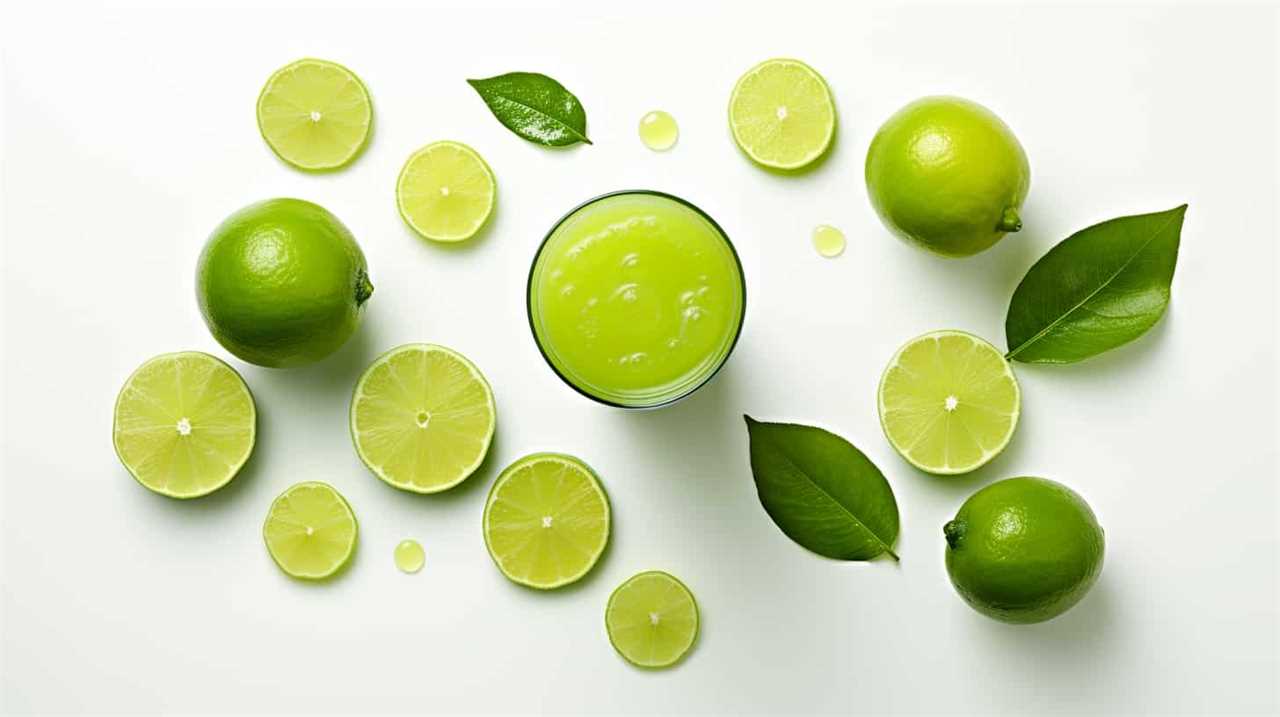
Key Takeaways
- Choose a reputable brand of aloe vera juice that prioritizes quality and uses organic, pure aloe vera.
- Avoid brands that contain added sugars or artificial ingredients.
- Use natural sweeteners like honey, agave syrup, or stevia to enhance the taste of aloe vera juice.
- Experiment with adding fruits, herbs, and other juices to create unique flavor combinations and enhance the health benefits of aloe vera juice.
Choosing the Right Aloe Vera Juice
We can enhance our experience with aloe vera juice by selecting the right brand and type for our preferences. When it comes to finding a reputable brand, it’s important to do some research and read reviews from other consumers. Look for brands that prioritize quality and use organic, pure aloe vera without any added sugars or artificial ingredients. Understanding the health benefits of aloe vera juice is also crucial in making the right choice. Aloe vera is known for its soothing properties, aiding digestion, promoting skin health, and boosting the immune system. By choosing a high-quality brand, we can ensure that we’re getting the maximum benefits from our aloe vera juice.
Now that we know how to choose the right brand, let’s move on to the next step of adding natural sweeteners.
Adding Natural Sweeteners
To enhance the flavor of our aloe vera juice, we can add natural sweeteners such as honey or agave syrup. Using alternative sweeteners not only adds sweetness but also brings unique flavors to the juice. Here are some options to consider:
- Stevia: A natural sweetener derived from the Stevia plant, it’s a zero-calorie alternative to sugar.
- Maple Syrup: This natural sweetener adds a rich and earthy flavor to the aloe vera juice.
- Dates: Pureed dates can be used to sweeten the juice while also providing essential nutrients like fiber.
In addition to using alternative sweeteners, we can enhance the flavor of aloe vera juice by adding spices and extracts. Cinnamon, ginger, or vanilla extract can add warmth and depth to the taste. By experimenting with different combinations of these natural sweeteners, spices, and extracts, we can create a flavor profile that suits our preferences.
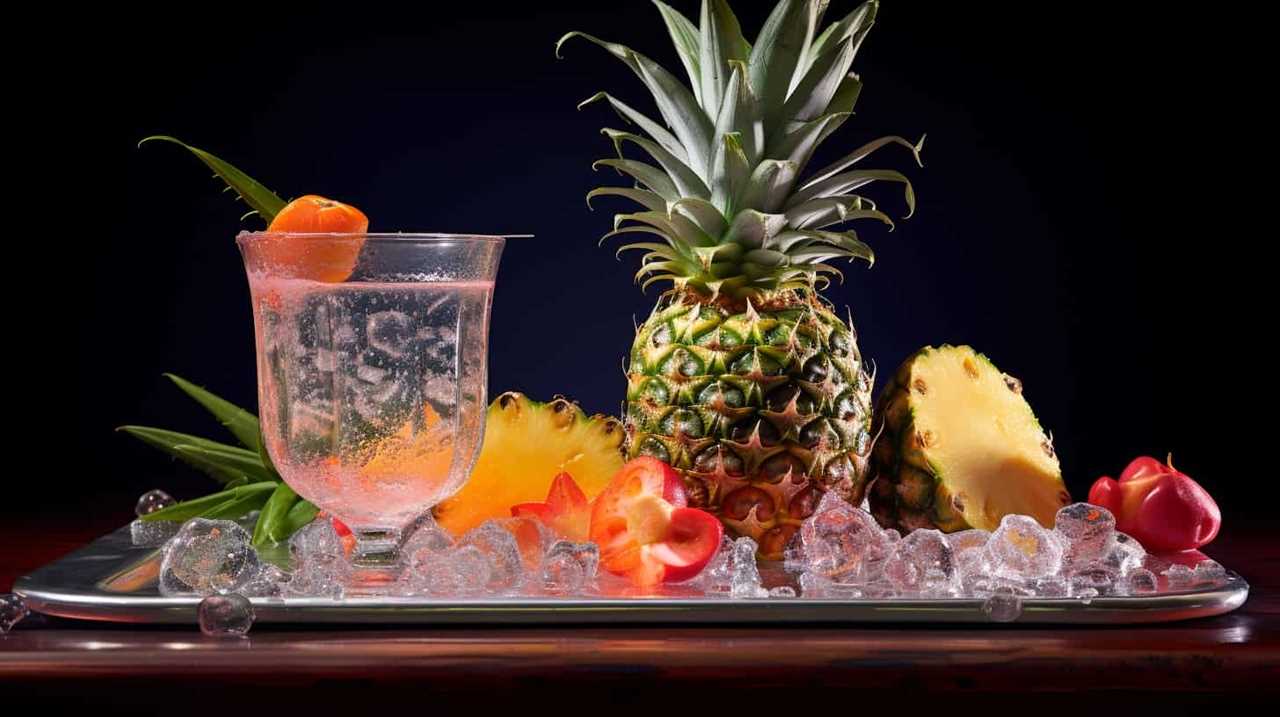
Now, let’s move on to the next section and learn how to infuse aloe vera juice with fruits and herbs to further enhance its taste.
Infusing With Fruits and Herbs
As we explore ways to make our aloe vera juice taste better, one option to consider is infusing it with fruits and herbs. Creating unique aloe vera blends by adding fruits and herbs not only enhances the flavor but also adds a touch of freshness and complexity to the juice.
Fruits like strawberries, pineapple, or citrus can add a burst of sweetness, while herbs like mint, basil, or ginger can provide a subtle yet refreshing twist. Exploring the benefits of herbal infusions can also be beneficial for our health. For example, adding a few sprigs of lavender can promote relaxation and reduce stress. Additionally, infusing aloe vera juice with rosemary can aid digestion and boost the immune system.
Blending With Other Juices
Let’s try mixing aloe vera juice with different fruit juices to create delicious and refreshing blends. Blending aloe vera juice with other fruits not only enhances its taste but also adds nutritional benefits to your drink. Here are three fruit juices that you can mix with aloe vera juice:

- Orange juice: Combining aloe vera juice with orange juice not only adds a tangy flavor but also boosts your intake of vitamin C, which is essential for a strong immune system.
- Pineapple juice: Mixing aloe vera juice with pineapple juice creates a tropical blend that isn’t only refreshing but also helps in digestion. Pineapple contains bromelain, an enzyme that aids in breaking down proteins and promoting better digestion.
- Watermelon juice: Blending aloe vera juice with watermelon juice creates a hydrating and refreshing combination. Watermelon is rich in water content and contains electrolytes that can help replenish your body’s fluids.
Experimenting With Flavor Combinations
While we can try various flavor combinations with aloe vera juice, it’s important to find the right balance to enhance its taste. Experimenting with different flavors can’t only make the juice more enjoyable but also enhance its health benefits.
Aloe vera juice is known for its numerous health benefits, such as boosting digestion, promoting hydration, and supporting the immune system. By adding complementary flavors, we can create a refreshing summer drink that not only tastes great but also provides a nutritional boost.
Some popular flavor combinations include mixing aloe vera juice with citrus fruits like lemon or orange, adding a splash of coconut water for a tropical twist, or combining it with cucumber and mint for a refreshing and cooling effect.
Don’t be afraid to get creative and find the flavor combination that suits your taste buds best!
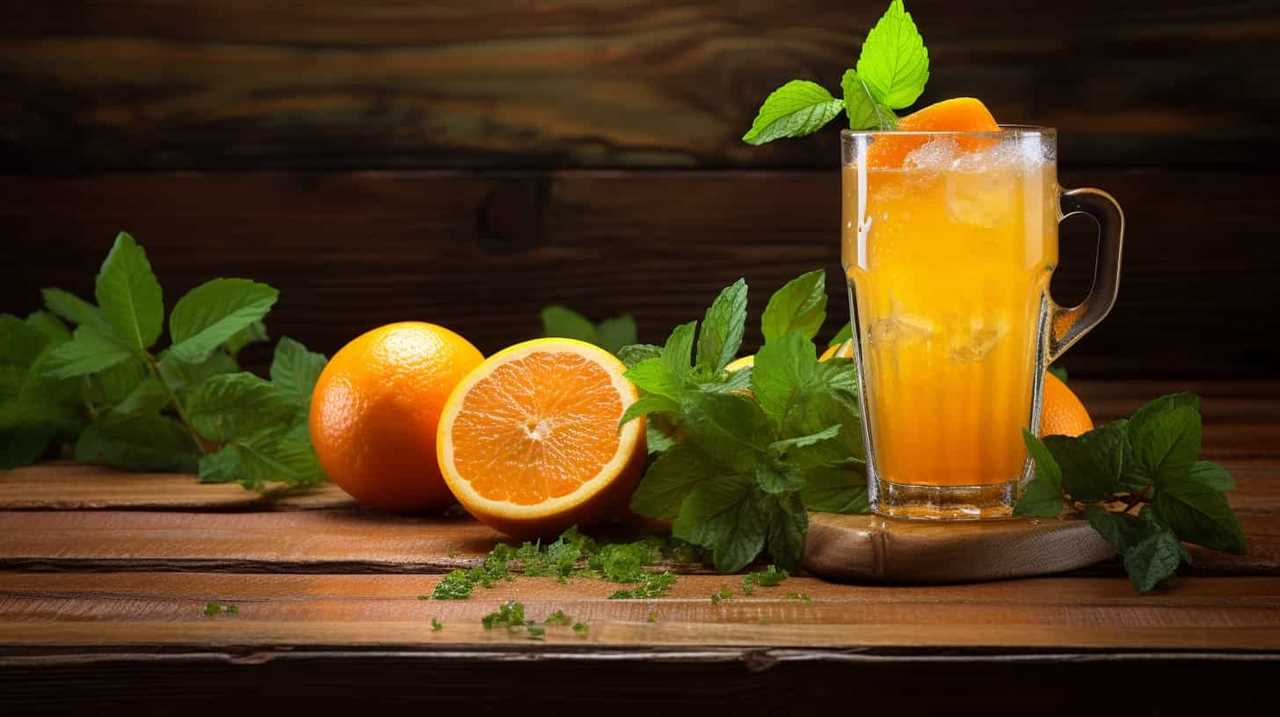
Frequently Asked Questions
Can I Use Store-Bought Aloe Vera Gel Instead of Fresh Aloe Vera for Making Juice?
Yes, you can use store-bought aloe vera gel instead of fresh aloe vera for making juice. However, it’s important to note that fresh aloe vera juice may have more health benefits due to its higher nutrient content.
How Long Can I Store Aloe Vera Juice in the Refrigerator?
Aloe vera juice can be stored in the refrigerator for up to a week. Refrigeration helps maintain the longevity and freshness of the juice, preserving its beneficial properties.
Can Aloe Vera Juice Help With Digestive Issues?
Aloe vera juice can potentially help with digestive issues when taken in appropriate dosages. However, it is important to note that there may be potential side effects. It is always best to consult with a healthcare professional before starting any new supplement regimen.
Can I Use Artificial Sweeteners Instead of Natural Sweeteners in My Aloe Vera Juice?
Using artificial sweeteners in aloe vera juice may affect its taste and potential health benefits. However, natural sweeteners like honey or stevia can enhance the flavor without compromising its nutritional value.

Is It Safe to Drink Aloe Vera Juice Every Day?
Drinking aloe vera juice daily can have numerous benefits, such as improving digestion and boosting the immune system. However, consuming it regularly may also lead to potential side effects like diarrhea or stomach cramps.
Conclusion
In conclusion, making aloe vera juice taste better is easy and enjoyable.
By choosing the right aloe vera juice and adding natural sweeteners, infusing with fruits and herbs, blending with other juices, and experimenting with flavor combinations, you can create a delightful and refreshing drink.
So go ahead and unleash your creativity in the kitchen, and transform your aloe vera juice into a sensational elixir that will transport your taste buds to paradise.
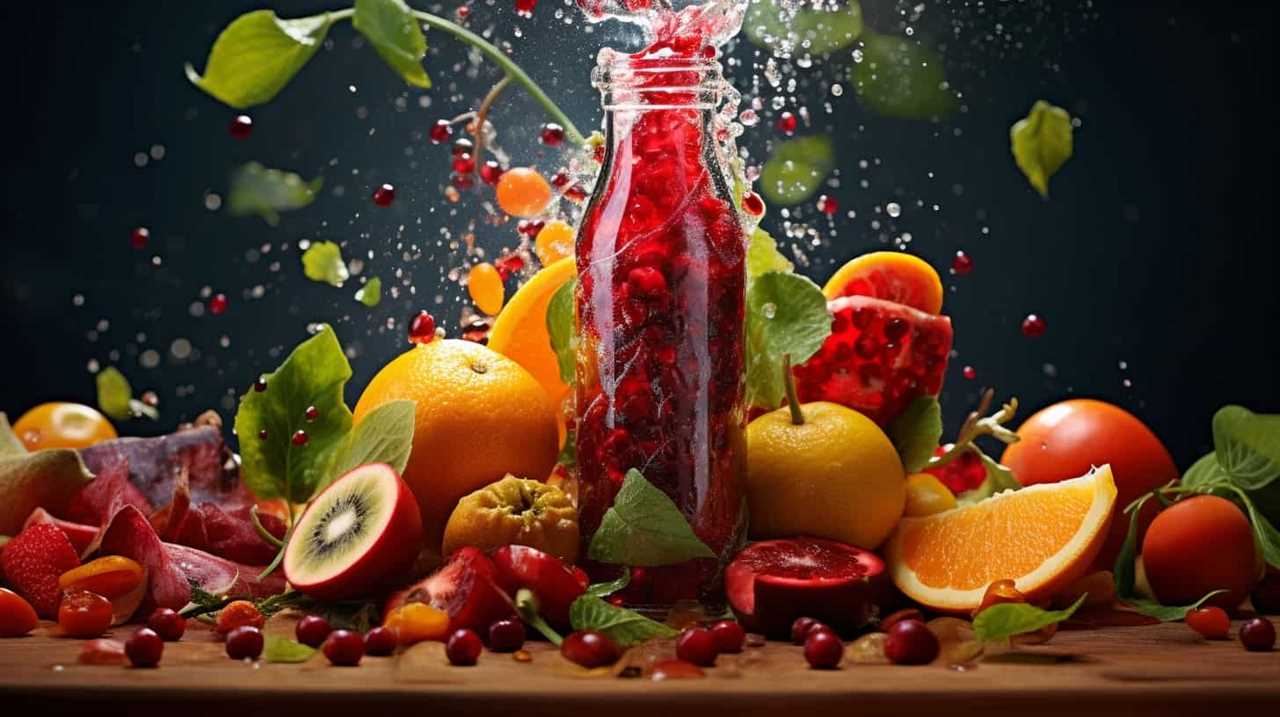
Susannah expertise lies in researching and compiling evidence-based content on juicing, nutrition, and overall health. She is committed to ensuring that The Juicery World offers accurate, up-to-date, and trustworthy information to empower readers to take control of their health. Susannah’s goal is to inspire individuals to embrace juicing as a way to nourish their bodies and live their best lives.
Juice Tips and Tricks
How to Make a Glass of Lemonade With Bottled Lemon Juice
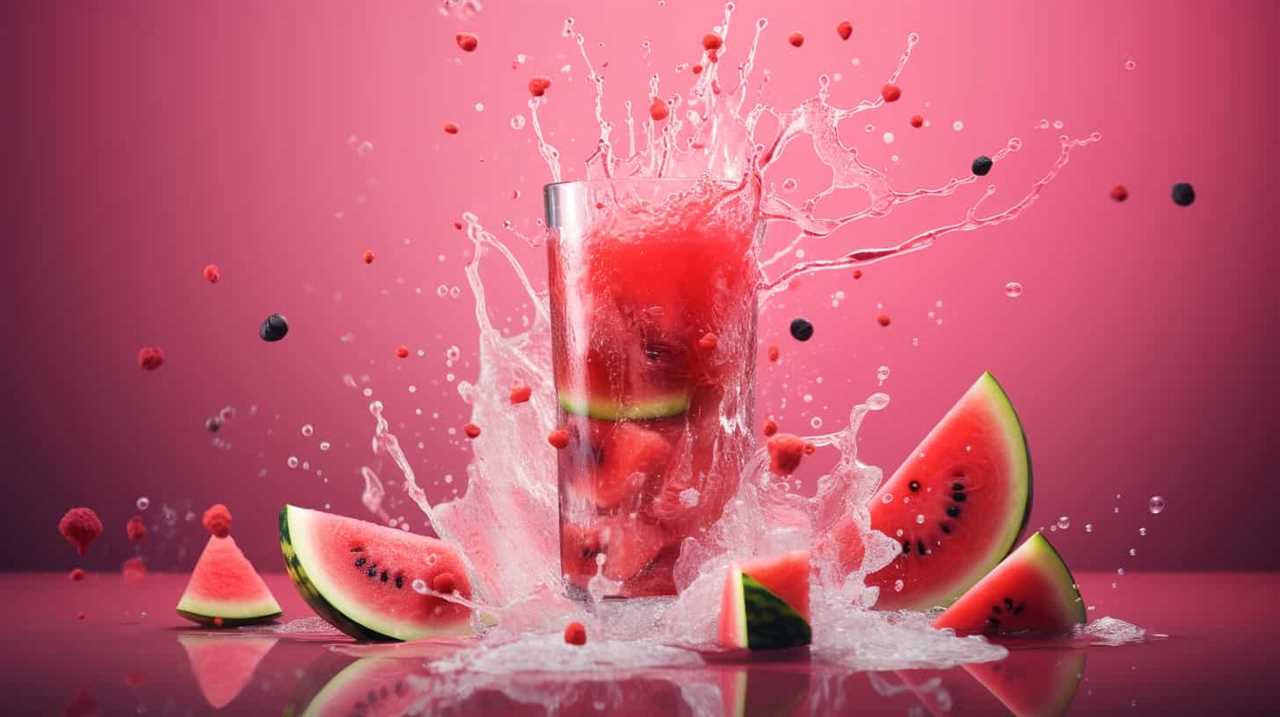
Are you craving a cool glass of lemonade to quench your thirst? Look no further! Try out our perfect recipe using bottled lemon juice that will surely please your taste buds.
In this article, we’ll guide you through the process of creating a tangy and sweet concoction that will leave you feeling refreshed and satisfied.
So grab your ingredients and let’s get started on this delightful journey of serving ourselves and others a glass of pure lemony goodness.
Key Takeaways
- Consider the storage of the bottled lemon juice (dark glass or plastic bottles, protect from light exposure, check expiration date)
- Choose a suitable pitcher and fresh lemons for enhanced flavor
- Store the lemonade concentrate in the refrigerator to maintain freshness
- Adjust the sweetness and tartness to taste with sugar or more lemon juice, and experiment with different sweeteners or additional flavors.
Choosing the Right Bottled Lemon Juice
What are the key factors we should consider when selecting the right bottled lemon juice for our lemonade?

One important factor is how the lemon juice is stored. Look for bottles that are made of dark glass or plastic, as they help protect the juice from light exposure, which can degrade its quality. It’s also important to check the expiration date to ensure freshness.
Another benefit of using bottled lemon juice is convenience. It saves time and effort compared to squeezing fresh lemons. Additionally, bottled lemon juice provides consistent flavor, as the acidity levels are standardized.
When selecting a brand, consider reading reviews and checking for certifications, such as organic or non-GMO.
Gathering the Necessary Ingredients and Tools
How can we gather all the necessary ingredients and tools to make a glass of lemonade with bottled lemon juice?
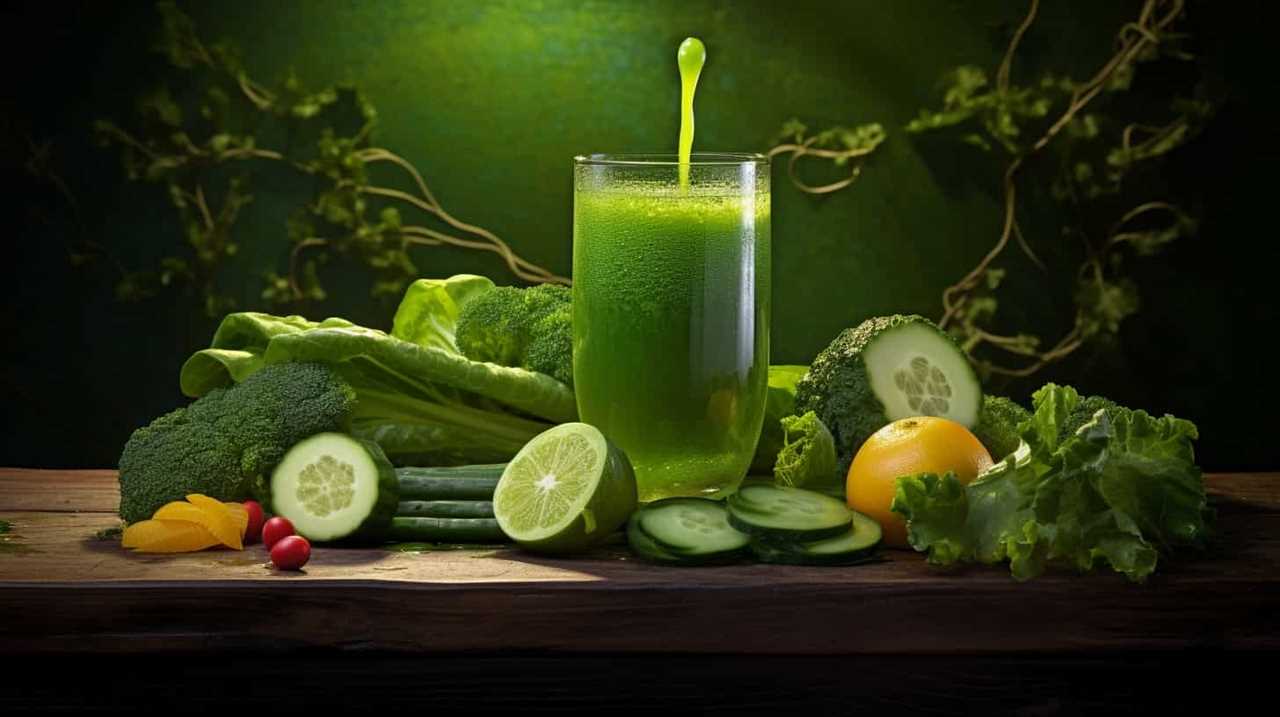
It’s important to start with the right pitcher. Look for a pitcher that’s made of glass or BPA-free plastic, as these materials won’t affect the taste of the lemonade. The pitcher should also have a lid or cover to keep the lemonade fresh and prevent spills.
Now, let’s talk about the lemons. While bottled lemon juice is convenient, using fresh lemons instead can elevate the flavor of your lemonade. Choose lemons that are firm and have a bright yellow color. Give them a gentle squeeze to ensure they’re juicy. To extract the juice, you’ll need a citrus juicer or a reamer. These tools make it easy to get every last drop of juice from the lemons.
Mixing the Lemonade Concentrate
To start mixing the lemonade concentrate, we’ll slowly pour the bottled lemon juice into the pitcher. It’s important to choose the right container for the lemonade concentrate. A pitcher with a lid or a tightly sealed container will help maintain the freshness and prevent any spills or leaks. Once the lemon juice is in the pitcher, we can move on to the next step of adding water and sweetener.
To ensure the lemonade concentrate stays fresh, it’s essential to store it properly. Keep the pitcher in the refrigerator to maintain its cool temperature and prevent any bacteria growth. If you have any leftover concentrate, transfer it to a smaller container with an airtight lid before refrigerating. This will help retain its flavor and prevent any contamination.
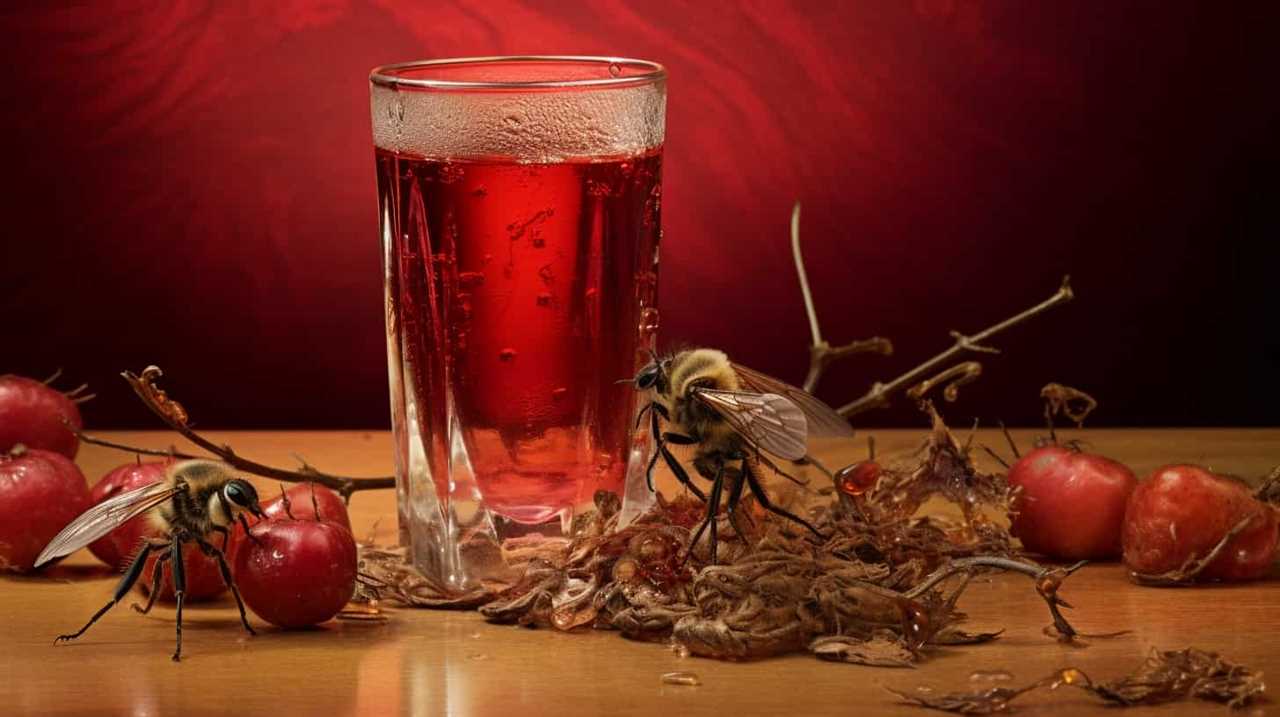
Now that we’ve mixed the lemonade concentrate, it’s time to adjust the sweetness and tartness to taste.
Adjusting the Sweetness and Tartness to Taste
We can adjust the sweetness and tartness of the lemonade to taste by adding more sugar or lemon juice, respectively. If you prefer a sweeter lemonade, simply add more sugar and stir until it dissolves completely. You can experiment with different sweeteners such as honey or agave syrup to find the perfect balance of sweetness.
On the other hand, if you want a tangier lemonade, add more lemon juice gradually, tasting as you go until it reaches your desired level of tartness.
Additionally, you can get creative with your lemonade by adding flavors like fresh mint leaves or a hint of lavender. These additions can elevate the flavor profile and create a more refreshing and unique experience.

Now that we’ve adjusted the sweetness and tartness of our lemonade, let’s move on to serving and enjoying your refreshing glass of lemonade.
Serving and Enjoying Your Refreshing Glass of Lemonade
Now let’s sit back, relax, and savor our refreshing glass of lemonade.
When it comes to serving and enjoying this delightful drink, there are a few techniques and garnishing options to consider.
Firstly, serving your lemonade chilled is essential for maximum enjoyment. Ensure that you have chilled glasses or add ice cubes to the glasses before pouring the lemonade.

To add a touch of elegance, you can garnish your lemonade with a slice of lemon on the rim of the glass. For an extra burst of flavor, you could also add a sprig of fresh mint or a few berries.
Remember to gently stir the lemonade before serving to evenly distribute the flavors.
Now, take a sip, feel the refreshing tang of lemon, and let the sweet and tart flavors dance on your taste buds.
Cheers!
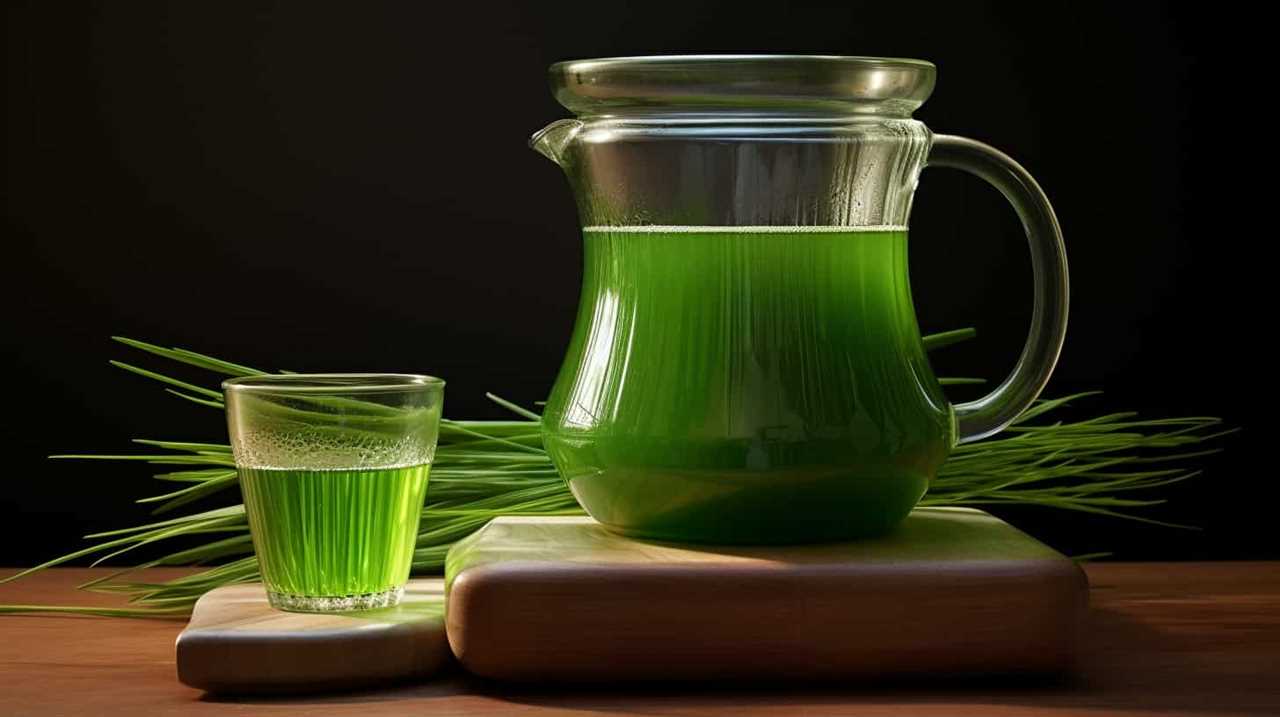
Frequently Asked Questions
Can I Use Fresh Lemons Instead of Bottled Lemon Juice?
Fresh lemons offer numerous benefits over bottled lemon juice. The taste of fresh lemons is unparalleled, providing a vibrant and tangy flavor. Incorporating fresh lemons into your lemonade will elevate its taste and give it a refreshing and authentic twist.
Can I Substitute Sugar With a Different Sweetener?
Substituting sweeteners in lemonade can enhance the flavor and offer health benefits. We’re knowledgeable about alternative sweeteners and can provide precise, detailed instructions on using them in place of sugar.
How Long Does the Lemonade Concentrate Need to Chill in the Refrigerator?
The chilling time for the lemonade concentrate in the refrigerator is typically around 1-2 hours. Using bottled lemon juice offers the benefit of convenience and consistent flavor for a refreshing glass of lemonade.
Can I Add Other Fruits or Flavors to the Lemonade?
Sure, we can definitely add different fruits or flavors to our lemonade. It’s a great way to experiment with unique flavors and create refreshing, personalized drinks. The possibilities are endless!

How Long Does the Lemonade Stay Fresh in the Refrigerator?
Lemonade made with bottled lemon juice can stay fresh in the refrigerator for about 5-7 days. To maximize shelf life, store it in an airtight container and keep it chilled.
Conclusion
And so, with a few simple steps and the right ingredients, a glass of refreshing lemonade is born.
Like a symphony of flavors dancing on your taste buds, this tangy elixir quenches thirst and brings joy on a hot summer day.
Just a sip transports you to a world of citrusy delight, where the sweetness and tartness blend harmoniously.

So go ahead, indulge in the art of lemonade-making and savor every drop of this sun-kissed nectar.
Cheers to the perfect glass of lemonade!
Susannah expertise lies in researching and compiling evidence-based content on juicing, nutrition, and overall health. She is committed to ensuring that The Juicery World offers accurate, up-to-date, and trustworthy information to empower readers to take control of their health. Susannah’s goal is to inspire individuals to embrace juicing as a way to nourish their bodies and live their best lives.
Juice Tips and Tricks
How to Know if Orange Juice Is Bad
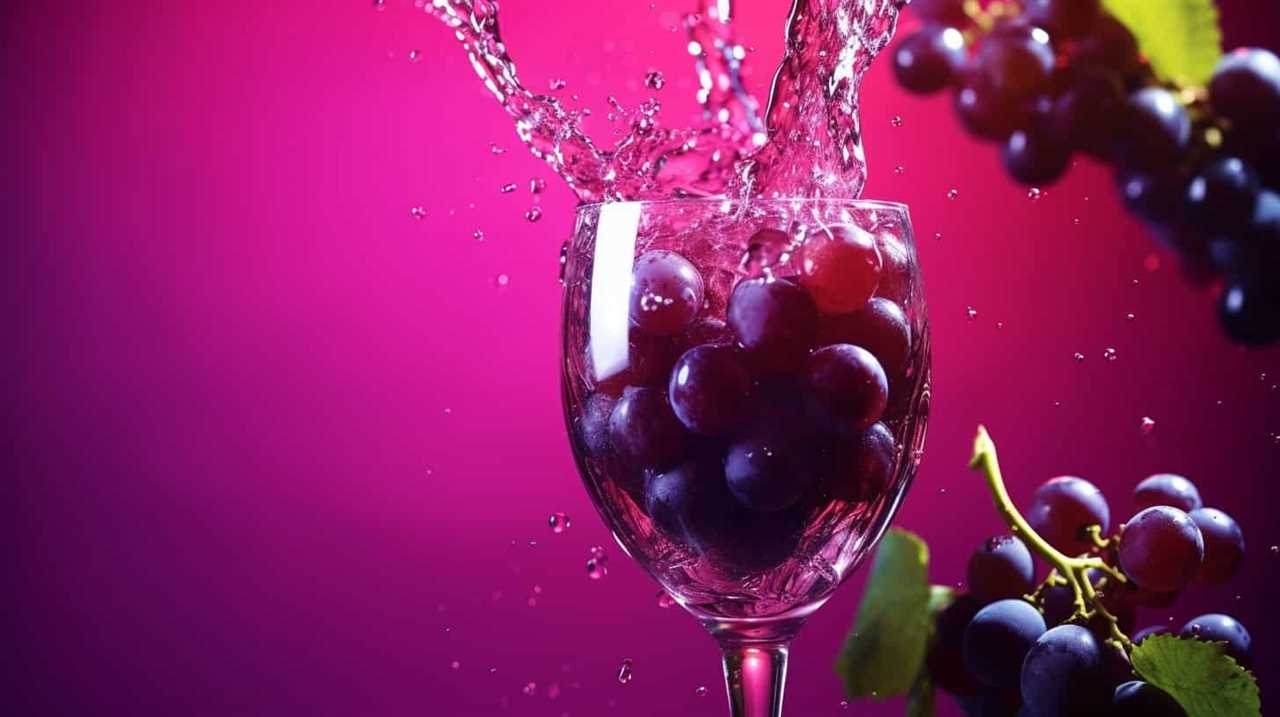
We’ve all been in that situation before – reaching for a glass of orange juice and hesitating, unsure if it’s still okay to drink. Fear not! This article will give you the knowledge you need to determine for sure if your orange juice is still fresh or if it’s gone bad.
With a blend of scientific precision and practical tips, we’ll explore color changes, strange smells, off taste, texture changes, and mold or growth that may indicate spoilage.
Let’s dive in and serve ourselves a refreshing glass of certainty!
Key Takeaways
- Color changes in orange juice can indicate a loss of freshness and shelf life extension, but it doesn’t necessarily mean the juice is bad.
- Unusual or off-putting odors in orange juice, such as sour or fermented scents, can be a sign of poor quality.
- An off taste in orange juice, such as sour, bitter, or fermented flavors, suggests that the juice is spoiled.
- Texture changes in orange juice, such as pulp separation or a thicker consistency, can occur as the juice ages, so it’s important to consume it before the expiration date.
Color Changes in Orange Juice
We should be aware that color changes can indicate whether orange juice is bad.

When it comes to orange juice, color is a crucial factor to consider. As oranges are exposed to air, an oxidation process occurs, which leads to changes in color. Fresh orange juice has a vibrant orange hue, indicating its freshness and high nutritional value.
However, as time passes, the juice may undergo a color change, turning dull or brownish. This change in color is a result of the oxidation process, which affects the flavor and quality of the juice. It’s important to note that while a change in color doesn’t necessarily mean the juice is bad, it does indicate that the juice is losing its freshness and shelf life extension.
Therefore, it’s advisable to consume orange juice when it’s at its freshest, as indicated by its vibrant orange color.
Strange Smells in Orange Juice
When it comes to evaluating orange juice, we should be cautious of any strange smells or odors. A fresh, pleasant smell is indicative of good quality orange juice. However, if you notice any unusual or off-putting odors, it may be a sign that the juice has gone bad. These smells can range from a sour or fermented scent to a rancid or moldy aroma.

It’s important to note that while some natural variations in scent can occur due to the specific variety of oranges used, any strong or unpleasant smells should raise concerns. If you have citrus fruit allergies, it’s especially important to pay attention to the smell of orange juice, as it could indicate the presence of spoilage or contamination.
Ensuring the quality of orange juice is essential as it’s a popular beverage known for its health benefits, including being rich in vitamin C and antioxidants.
Off Taste of Orange Juice
Our taste buds can detect even the slightest hint of an off taste in orange juice, which can indicate that it has gone bad. The taste of orange juice should be fresh, tangy, and slightly sweet. If it tastes sour, bitter, or fermented, it’s likely spoiled.
One common cause of an off taste in orange juice is the use of overripe oranges. When oranges become overripe, their flavor profile changes, resulting in a less pleasant taste. Another factor to consider is the expiration date. Orange juice that has passed its expiration date is more likely to develop an off taste. It’s important to check the expiration date before consuming orange juice to ensure its freshness and quality.
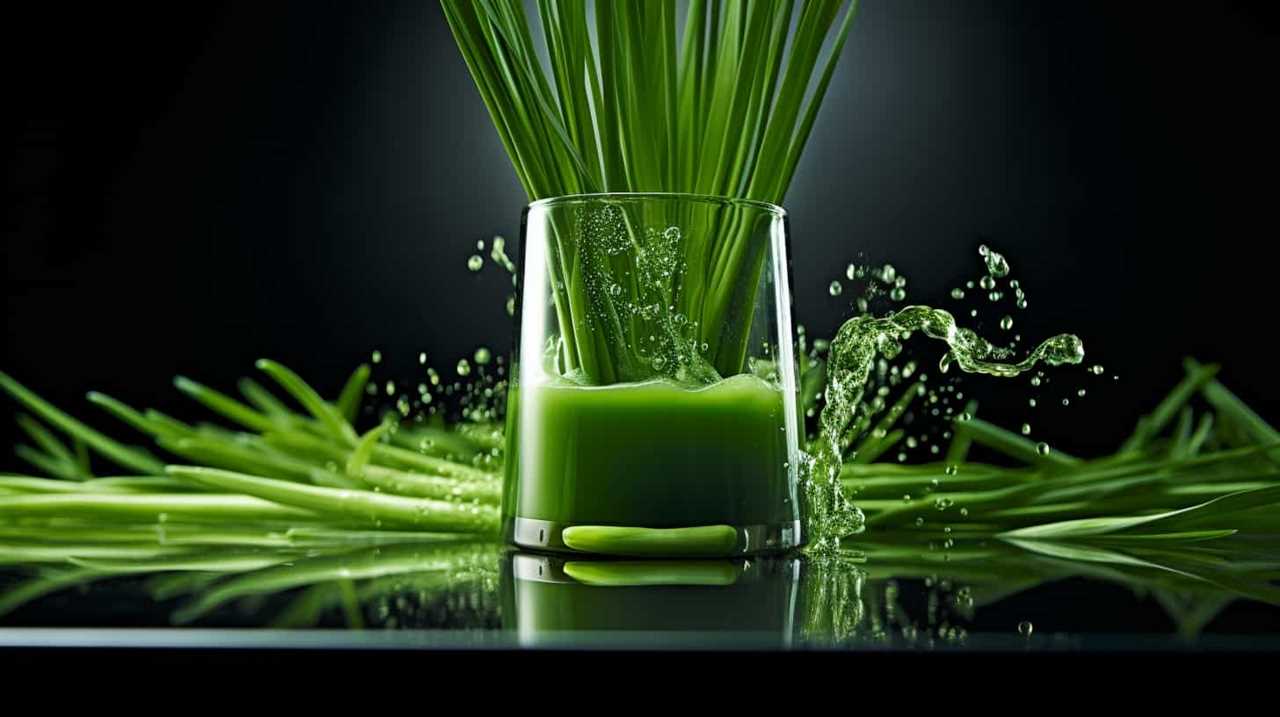
Now, let’s move on to discuss the texture changes in orange juice.
Texture Changes in Orange Juice
As we explore the texture changes in orange juice, it’s important to note that certain factors can cause it to become thicker or develop sediment. One common texture change in orange juice is pulp separation, where the pulp separates from the liquid and settles at the bottom. This can occur naturally over time, as the pulp particles become denser and sink.
Another factor that can affect the texture of orange juice is the expiration date. As orange juice ages, it may start to develop a thicker consistency and even form sediment. This is a result of the natural breakdown of the juice’s components. Therefore, it’s crucial to check the expiration date on orange juice and consume it before it reaches its expiration date to avoid any undesirable texture changes.
Mold or Growth in Orange Juice
We need to be aware of the possibility of mold or other growth occurring in orange juice. Mold can develop in orange juice if it isn’t stored properly or if it has passed its expiration date.
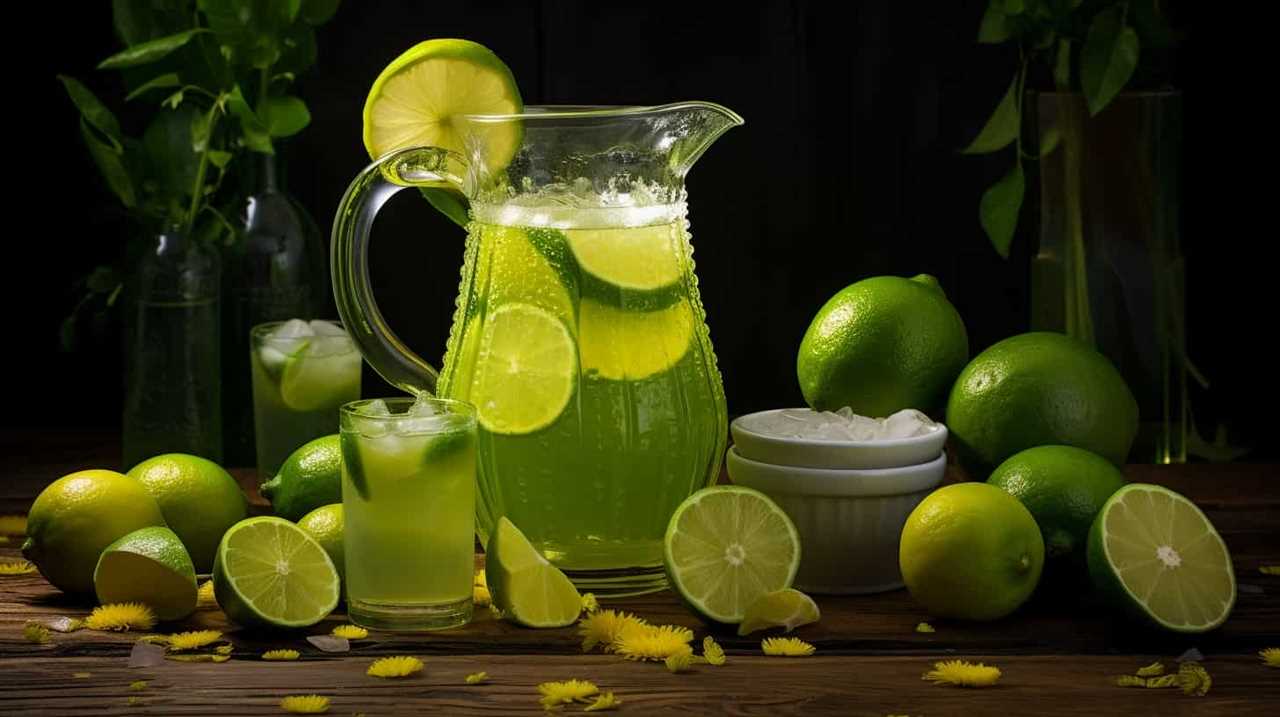
To prevent mold growth, it’s important to follow these steps:
- Store orange juice in the refrigerator at a temperature below 40°F (4°C).
- Check the expiration date on the bottle before consuming. Discard any orange juice that has expired.
- Keep the container tightly sealed to prevent air and moisture from entering, as these can promote mold growth.
Regularly inspecting orange juice for any signs of mold or unusual growth is essential. If you notice any discoloration, a strange odor, or visible mold, it’s best to discard the juice to avoid any potential health risks.
Frequently Asked Questions
Can Orange Juice Go Bad if It’s Stored in the Freezer for Too Long?
Frozen orange juice can potentially lose its nutrients and change its taste if stored in the freezer for too long. It is important to check for signs of spoilage before consuming it.
How Long Can Orange Juice Stay Fresh in the Refrigerator Once It’s Opened?
Once opened, orange juice can stay fresh in the refrigerator for about 7-10 days. To maintain its freshness, store it properly by keeping it tightly sealed and at a consistently cold temperature.
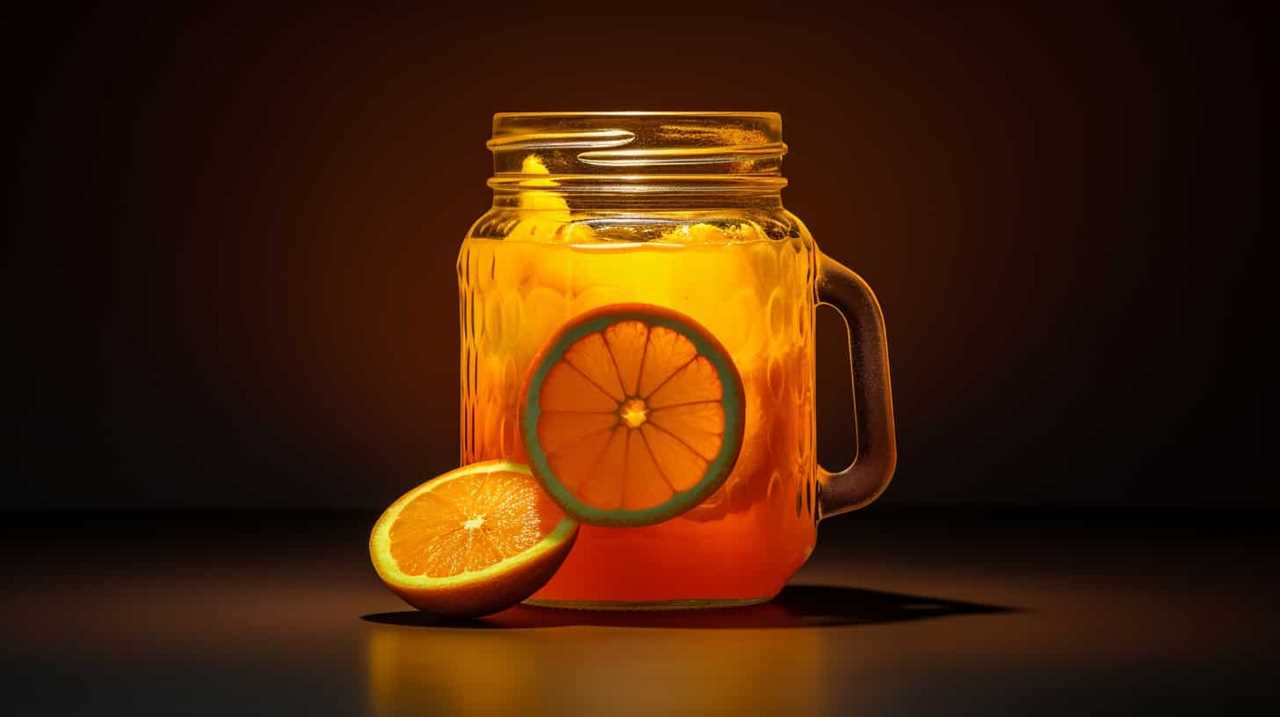
Is It Safe to Consume Orange Juice That Has Been Left Out at Room Temperature Overnight?
Left out orange juice may not be safe to drink as it can harbor harmful bacteria. Signs of spoiled orange juice include a sour smell, mold growth, and a change in color or taste.
Can Orange Juice Develop Harmful Bacteria if It’s Past Its Expiration Date but Still Looks and Smells Fine?
Orange juice can cause food poisoning if it develops harmful bacteria, even if it looks and smells fine. Signs of spoiled orange juice include a sour smell, mold growth, and a change in color or taste.
Does the Nutritional Value of Orange Juice Decrease as It Starts to Go Bad?
As orange juice goes bad, its nutritional value decreases. The longer it sits on the shelf, the more nutrients it loses. Signs of spoilage include a sour smell, off taste, and mold growth.
Conclusion
In conclusion, determining if orange juice is bad requires careful observation of color changes, strange smells, off taste, and texture changes. Just like a detective investigating a case, we must rely on our senses to detect any signs of spoilage.
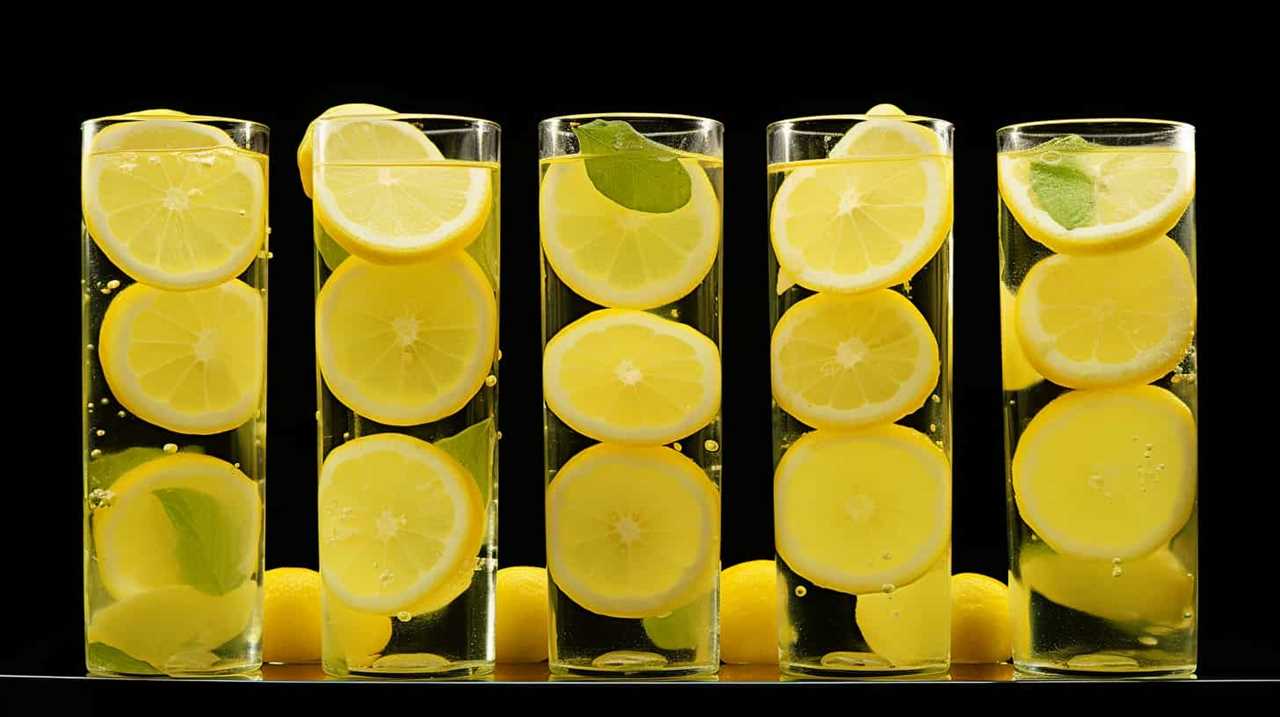
If we detect mold or growth in the orange juice, it’s a clear indication that it’s no longer safe to consume. By remaining vigilant and attuned to these indicators, we can ensure that our orange juice is always fresh and enjoyable.
Susannah expertise lies in researching and compiling evidence-based content on juicing, nutrition, and overall health. She is committed to ensuring that The Juicery World offers accurate, up-to-date, and trustworthy information to empower readers to take control of their health. Susannah’s goal is to inspire individuals to embrace juicing as a way to nourish their bodies and live their best lives.
-

 Juice Tips and Tricks3 months ago
Juice Tips and Tricks3 months agoHow Much Lemon Juice Is Equal To Half A Lemon
-

 Juice Tips and Tricks3 months ago
Juice Tips and Tricks3 months agoHow Much Lemon Juice Concentrate Equals One Lemon
-

 Juice Tips and Tricks3 months ago
Juice Tips and Tricks3 months agoHow Long Can You Drink Orange Juice After The Expiration Date
-

 Fruit Juice Varieties2 months ago
Fruit Juice Varieties2 months agoTop 11 Most Loved Fruit Juice Varieties
-

 Juice Tips and Tricks3 months ago
Juice Tips and Tricks3 months agoHow Much Lemon Juice Is Equivalent To 1 Lemon
-

 Organic and Natural Juices2 months ago
Organic and Natural Juices2 months ago8 Best Organic Brands for Fruit Juice
-

 Juice Tips and Tricks3 months ago
Juice Tips and Tricks3 months agoHow Much Lemon Juice Is Equivalent To One Lemon
-

 Juice Manufacturing Process2 months ago
Juice Manufacturing Process2 months ago9 Best Steps in Industrial Juice Manufacturing Process



